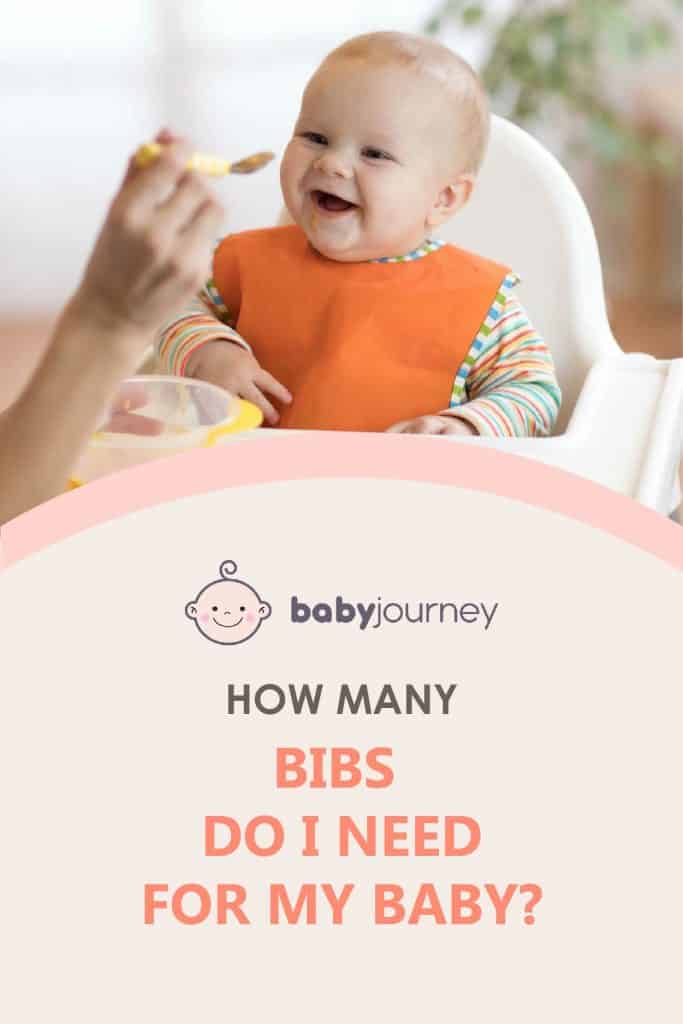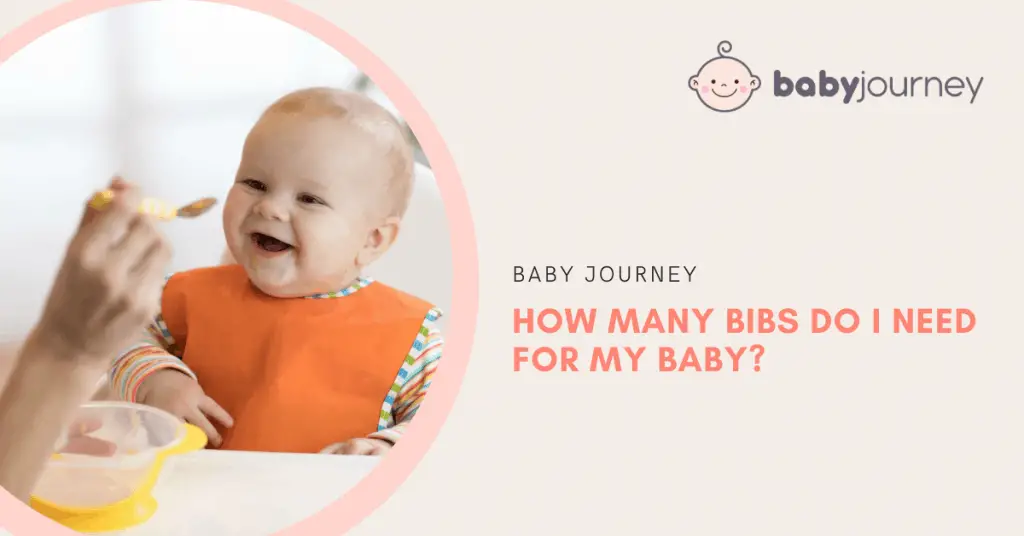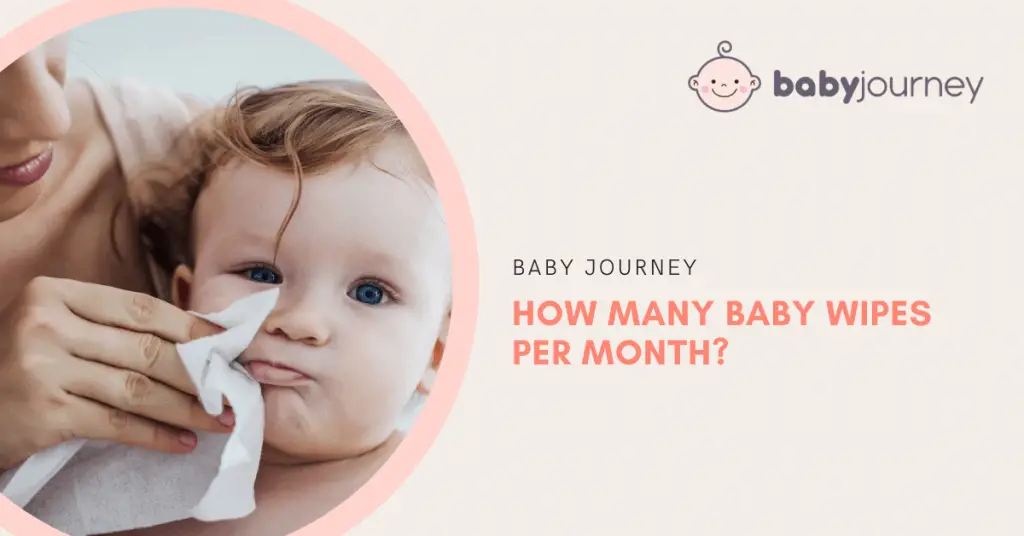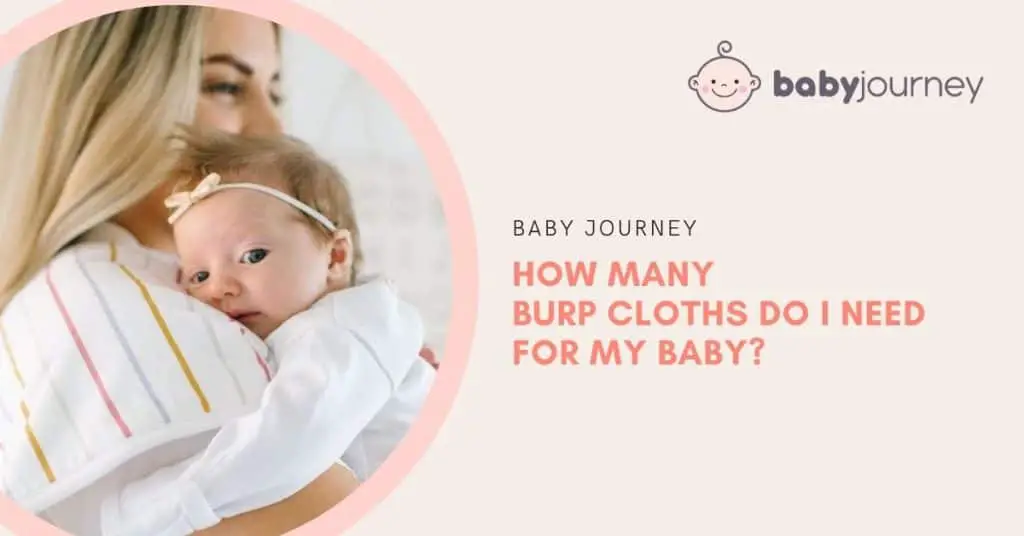When it comes to babies, there are so many things to fill up your baby registry, with bibs being one of the most important items to get for baby feeding. Bibs are pieces of cloth worn by hanging or tying it on your child’s neck to prevent food from spilling off while they eat.
They may seem similar to burp cloths but unlike burp cloths, they can be wrapped around the neck via tie strings or snap fasteners.
Bibs come in different sizes, shapes, and designs and can differ in purpose. Some of them include the feeding bibs, drool bibs and smock bibs.
But what are the differences in those bib types? When do babies start wearing bibs? And how many bibs do I need? These are among the most-asked questions for first time parents.
As simple as this may sound, its complexity is hardly overruled. Let’s take a deeper look at this subject.
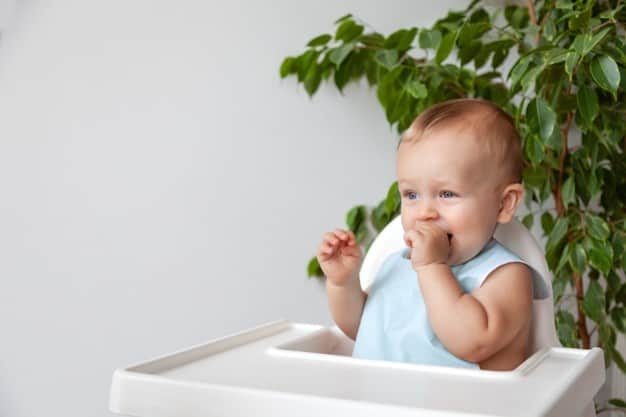
When Do Babies Start Wearing Bibs and Why?
It is recommended that babies should start using bibs immediately after they are born. Children can start using bibs from age 0-6 years. And while shopping for these bibs, make sure it is collective.
This means you should make sure you get a few different types of bibs as each type of bib serves slightly different purpose. Normally, bibs are made from soft organic cotton or absorbent fabric, though they are also produced with rubber or silicone materials.
Why Baby Bibs Are Necessary
Babies can get messy with their food. At the newborn stage, babies tend to drool all over the place, and that is unavoidable. Bibs like the droolers help to protect your baby’s clothes.
On the other hand, bibs also serve to reduce the mess made during mealtimes. As if drooling on the clothes isn’t enough, sometimes your baby will score extra mess points by spitting up from their food or causing solid food to drip from their mouth. Having cloth bibs such as the feeding bib helps to contain the mess in one place so you can easily clean them after.
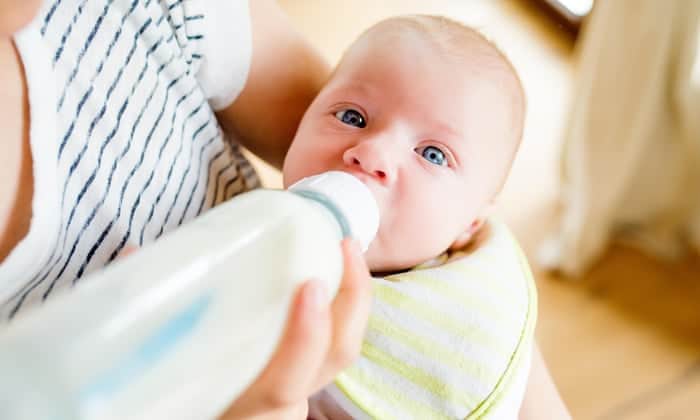
Do Newborns Need Bibs?
Bibs definitely exist for newborns and young babies, so yes, newborns need bibs! Unless you want to turn yourself into some domestic janitor, it is important you stock up on those best bibs, since newborns aren’t able to eat from a plate on their own until they are six months old at least, plus the possibility of them drooling and spitting up is real high.
Types of Baby Bibs
Just when you thought bibs are just bibs, there are actually a few types to this piece of baby item. Let’s take a look at the different types of bibs available:
Drool Bibs (aka the Drooler or Dribbler Bibs)
Drool bibs are the regular bibs, and it is used most when they are still eating from the feeding bottle. Also called the drooler or dribbler bib, this type comes in many styles, from a simple flat piece of cloth to a bandana round the neck.
Babies are known to dribble saliva most often, so to avoid wetting their clothes or messing up the floor with saliva while in the house, putting on a drooler all the time doesn’t sound like a bad idea at all except the concern on baby’s safety in wearing a bib.
If you wonder what are the best bibs for drooling, a bandana bib is better than the flat squarish piece though. This is because of their ability to absorb more moisture, and it is pretty fast in soaking up liquids. Not only are the bandana bibs the best baby drool bibs but this functional cloth can also become a fashion statement.
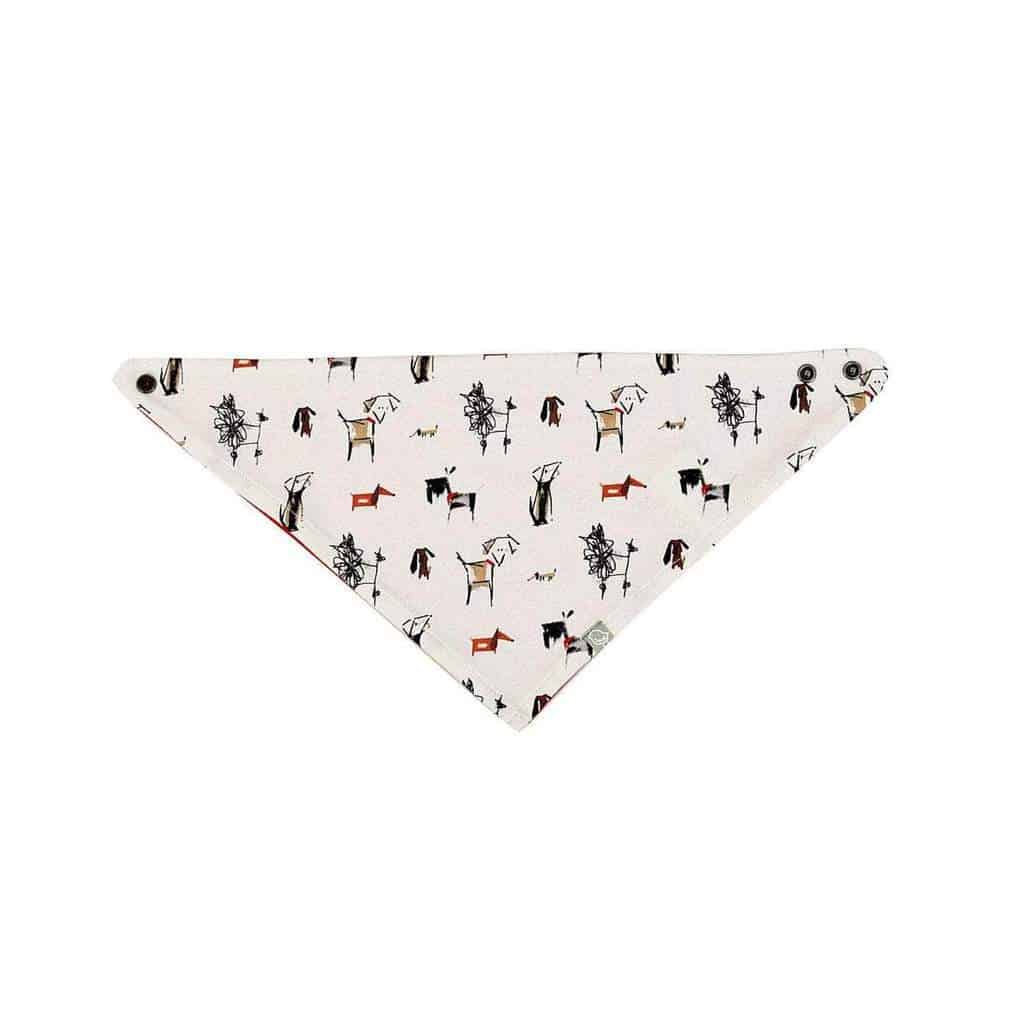
Feeding Bibs
The feeding bibs are best for when your baby graduates from feeding on the bottle to eating from a plate. This is when things can get even messier at the highchair or dining table, so this bib is quite a lifesaver for many parents.
Feeding bibs can be distinctly recognised from other bibs as they come with a pocket meant to hold both solid and liquid spills off your baby’s foods. Feeding bibs help to not only keep away from staining your baby’s clothes but also keep the floor clean from the mess and spills.
Feeding bibs are usually made of waterproof materials such as silicone. Some of the popular feeding bibs many parents swear by include the mushie Silicone Baby Bib and the Bumkins SuperBib.
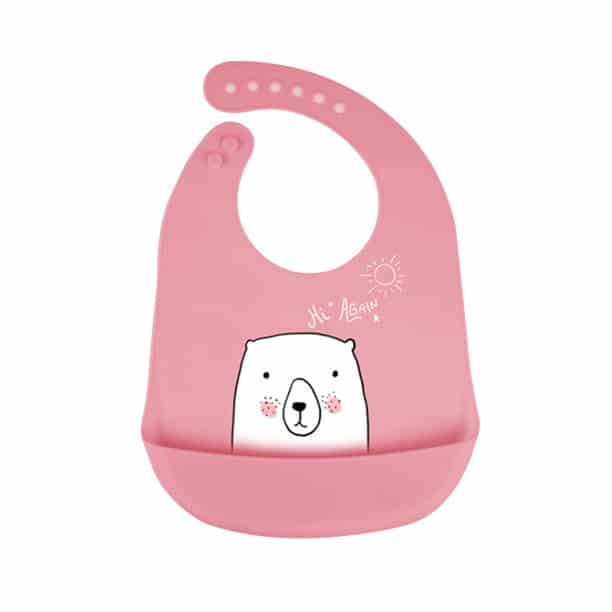
Smock Bibs
Smock bibs are also called long-sleeved bibs, and like the name suggests, they are worn like shirts. They are designed to cover the baby from the neck down to the knee, which automatically becomes a great protection against food spillage.
They are perfect bibs to use when the baby is dressed up in a nice outfit and you don’t want to risk any part of the clothes to succumb to the food mess or vomiting, especially when you are out for a meal together. Smock bibs tend to be bulkier since they cover a large area of the body, with an opening that enables the baby’s head to fit in.
With an open back design, you can easily remove it and roll up the bib without worrying about your baby soiling his or her clothes with mushy food, liquids, vomit and vomit smell. Some popular choices are the Bumkins Sleeved Bibs and the Paw Legend Long Sleeved Baby Bib.
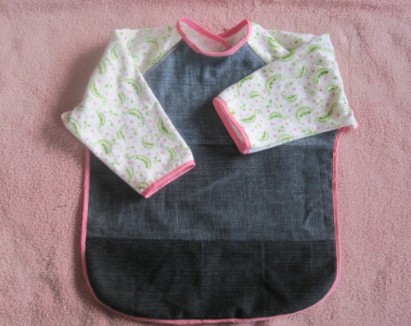
Disposable Bibs
Disposable bibs are handy when you are traveling. It is very light in weight, so you don’t have to worry about the cumbersomeness when packing and organizing this baby item in your luggage.
Washing is no longer a problem – you can just fold it up and trash it properly! Despite being disposable, you can find many cute patterns and sizes for this bib type. Examples include the Bibsters Sesame Street Large Disposable Bibs and the Munchkin Disposable Bibs.
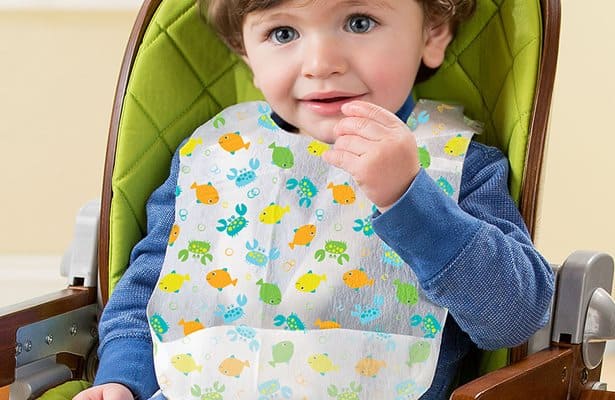
Recommended Bibs by Age
Before knowing the answer to “how many bibs do I need for my baby”, how do you know what bib size to get for your little one?
To help you understand about the best bib to get by age, here’s a simple table of recommended bib type corresponding to baby’s age groups:
| Age | Recommended Bib Type |
0-6 months | Drool bibs |
4 months onwards | Feeding bibs |
6 months onwards | Smock bibs |
How Many Bibs Does My Baby Need?
Now that you know the types of bibs to get, it’s time to figure out the number of bibs. The thing is, there is no specific number to how many bibs should you get for your baby. Most of the time, it depends on your baby and your laundry frequency.
As your baby grows older, the whole eating process becomes even messier as they learn to grab at food and cutlery, and feeding themselves. This is also one major reason why you should not shop for just one type of bib but to make it vary.
Many parents suggest a variety of numbers, but the most common recommendation goes to having at least 10 drool bibs and 1 feeding bib on hand. Of course, there is no right or wrong in getting more bibs – you can even consider getting up to 20 drool bibs and 5 feeding bibs if that is more convenient for you to handle your baby.
How Long Can A Bib Last?
Bibs can hardly become worn out so they last pretty long (unless you get disposable ones, which are meant to be single use). The worst that can happen is the labels coming off, probably due to the way they roughly pull it each time.
Generally, newborn bibs are just too strong for kids of that age to tear them apart. Unless you have gotten the wrong bib produced with inferior materials, bibs can last you for years to come, even after the kids are all grown up.
Baby Bibs Safety
Surprisingly, bibs can be quite risky if you fail to use it right; it can become a choking hazard and suffocate your children if you get too careless. That is why it is advisable for parents to always pay attention to their kids when they are wearing bibs and check their body countenance to see when they start struggling – motioning around their neck area.
Some of the precautionary measures you can take include:
- Quickly remove the bib after you are done feeding the kid.
- Make sure they don’t sleep with it.
- Make sure the bib tie is well fastened. That way, it won’t tangle, even when they play with it.
- Remove it when you are holding the baby, it can get entangled and thus, suffocate the baby.
How Many Bibs Do I Need Depends On Your Baby and You
It can be tricky for a start to determine the number of bibs you need for your baby. However, as you go along, you will learn to balance between how many to get and your laundry, since you will learn about your baby’s habits soon enough.
Again, be sure to have extra bibs to change the ones you have used. You wouldn’t want to use a wet or half-dried bib on your child as it can irritate their skin starting from the neck.
Also, consider adding all types of bibs so that you have a complete set of bibs to battle against those spills, spit-ups and mess any time. While putting on bibs on your baby, you should also be aware of the potential dangers and remember about proper use of bibs on your little one.
Hope this guide helps! If you have questions, feel free to leave your feedback through the comment section – I’ll be more than glad to answer every one of them. And if you find this article helpful, help us spread the word by sharing it out!
—
